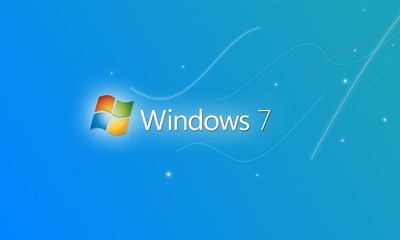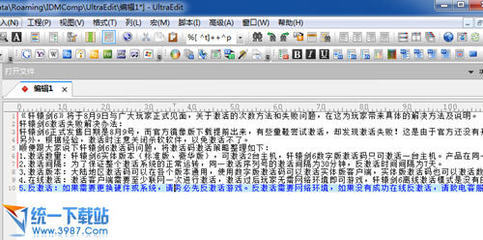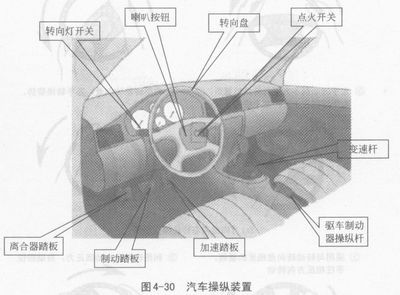目录
简单介绍文件资料版本内容 1、C、传统 C++ 2、标准 C++ 3、C99 增加
疑问解答 1、c++中 string与string.h 的作用和区别 2、c++ <string.h>中包括哪些函数?
string.h文件中函数的详细用法 1、strcpy 2、strcat 3、strchr 4、strcmp 5、strncmpi 6、strcpy 7、strcspn 8、strdup 9、stricmp 10、strerror 11、strcmpi 12、strncpy 13、strnicmp 14、strnset 15、strpbrk 16、strrchr 17、strrev 18、strset 19、strspn 20、strstr 21、strtod 22、strtok 23、strtol 24、strupr 25、swab
简单介绍
C语言里面关于字符数组的函数定义的头文件,常用函数有strlen、strcmp、strcpy等等,更详细的可以到include文件夹里面查看该文件。
文件资料
文件名称 string.h
文件大小 1.30 MB
系统文件 否
后台执行 否
使用网络 否
硬件相关 否
常见错误 加载异常
内存使用 未知(N/A)
安全等级 0
广告软件 否
间谍软件 否
木马病毒 否
编程软件 是
函数库文件 是
函数数目 26
版本内容
string.h在c语言和c++语言中都被广泛的使用,但是具体情况不是很一样。由于传统的C++脱胎于C,所以传统C++中于C语言中对本词条的用法差不多,经过美国标准化组织修改标准化后的标准C++中,定义则是大不相同。1、C、传统 C++
其中包含的引用头文件如下:
#include <assert.h> //设定插入点
#include <ctype.h> //字符处理
#include <errno.h> //定义错误码
#include <float.h> //浮点数处理
#include <fstream.h> //文件输入/输出
#include <iomanip.h> //参数化输入/输出
#include <iostream.h> //数据流输入/输出
#include <limits.h> //定义各种数据类型最值常量
#include <locale.h> //定义本地化函数
#include <math.h> //定义数学函数
#include <stdio.h> //定义输入/输出函数
#include <stdlib.h> //定义杂项函数及内存分配函数
#include <string.h> //字符串处理
#include <strstrea.h> //基于数组的输入/输出
#include <time.h> //定义关于时间的函数
#include <wchar.h> //宽字符处理及输入/输出
#include <wctype.h> //宽字符分类2、标准 C++
其中包括的头文件如下(同上的不再注释)
#include <algorithm> //STL 通用算法
#include <bitset> //STL 位集容器
#include <cctype>
#include <cerrno>
#include <clocale>
#include <cmath>
#include <complex> //复数类
#include <cstdio>
#include <cstdlib>
#include <cstring>
#include <ctime>
#include <deque> //STL 双端队列容器
#include <exception> //异常处理类
#include <fstream>
#include <functional> //STL 定义运算函数(代替运算符)
string.h(2张)
#include <limits>
#include <list> //STL 线性列表容器
#include <map> //STL 映射容器
#include <iomanip>
#include <ios> //基本输入/输出支持
#include <iosfwd> //输入/输出系统使用的前置声明
#include <iostream>
#include <istream> //基本输入流
#include <ostream> //基本输出流
#include <queue> //STL 队列容器
#include <set> //STL 集合容器
#include <sstream> //基于字符串的流
#include <stack> //STL 堆栈容器
#include <stdexcept> //标准异常类
#include <streambuf> //底层输入/输出支持
#include <string> //字符串类
#include <utility> //STL 通用模板类
#include <vector> //STL 动态数组容器
#include <cwchar>
#include <cwctype>
using namespace std;3、C99 增加
#include <complex.h> //复数处理
#include <fenv.h> //浮点环境
#include <inttypes.h> //整数格式转换
#include <stdbool.h> //布尔环境
#include <stdint.h> //整型环境
#include <tgmath.h> //通用类型数学宏
疑问解答
1、c++中 string与string.h 的作用和区别
答:一般一个C++的老的带“.h”扩展名的库文件,比如iostream.h,在新标准后的标准库中都有一个不带“.h”扩展名的相对应,区别除了后者的好多改进之外,还有一点就是后者的东东都塞进了“std”名字空间中。
但唯独string特别。
问题在于C++要兼容C的标准库,而C的标准库里碰巧也已经有一个名字叫做“string.h”的头文件,包含一些常用的C字符串处理函数。
这个头文件跟C++的string类半点关系也没有,所以 <string>并非 <string.h>的“升级版本”,他们是毫无关系的两个头文件。2、c++ <string.h>中包括哪些函数?
答:常用函数如下:
strlen 求字符串长度
strcmp 比较2个字符串是否一样
strcat 字符串连接操作
strcpy 字符串拷贝操作
strstr 查询子串
string.h文件中函数的详细用法
下面为string.h文件中函数的详细用法,附加实例:1、strcpy
函数名: strcpy
功 能: 拷贝一个字符串到另一个
用 法: char *strcpy(char *destin, char *source);
程序例:
#include <stdio.h>
#include <string.h>
int main(void)
{
char string[10];
char *str1 = "abcdefghi";
strcpy(string, str1);360pskdocImg_3_xyz
printf("%sn", string);
return 0;
}2、strcat
函数名: strcat
功 能: 字符串拼接函数
用 法: char *strcat(char *destin, char *source);
程序例:
#include <string.h>
#include <stdio.h>
int main(void)
{
char destination[25];
char *blank = " ", *c = "C++", *Borland = "Borland";
strcpy(destination, Borland);
strcat(destination, blank);
strcat(destination, c);
printf("%sn", destination);
return 0;
}3、strchr
函数名: strchr
功 能: 在一个串中查找给定字符的第一个匹配之处
用 法: char *strchr(char *str, char c);
程序例:
#include <string.h>
#include <stdio.h>
int main(void)
{
char string[15];
char *ptr, c = 'r';
strcpy(string, "This is a string");
ptr = strchr(string, c);
if (ptr)
printf("The character %c is at position: %dn", c, ptr-string);
else
printf("The character was not foundn");
return 0;
}4、strcmp
函数名: strcmp
功 能: 串比较
用 法: int strcmp(char *str1, char *str2);
看Asic码,str1>str2,返回值 > 0;两串相等,返回0
程序例:
#include <string.h>
#include <stdio.h>
int main(void)
{
char *buf1 = "aaa", *buf2 = "bbb", *buf3 = "ccc";
int ptr;
ptr = strcmp(buf2, buf1);
if (ptr > 0)
printf("buffer 2 is greater than buffer 1n");
else
printf("buffer 2 is less than buffer 1n");
ptr = strcmp(buf2, buf3);
if (ptr > 0)
printf("buffer 2 is greater than buffer 3n");
else
printf("buffer 2 is less than buffer 3n");
return 0;
}5、strncmpi
函数名: strncmpi
功 能: 将一个串中的一部分与另一个串比较, 不管大小写
用 法: int strncmpi(char *str1, char *str2, unsigned maxlen);
程序例:
#include <string.h>
#include <stdio.h>
int main(void)
{
char *buf1 = "BBB", *buf2 = "bbb";
int ptr;
ptr = strcmpi(buf2, buf1);
if (ptr > 0)
printf("buffer 2 is greater than buffer 1n");
if (ptr < 0)
printf("buffer 2 is less than buffer 1n");
if (ptr == 0)
printf("buffer 2 equals buffer 1n");
return 0;
}6、strcpy
函数名: strcpy
功 能: 串拷贝
用 法: char *strcpy(char *str1, char *str2);
程序例:
#include <stdio.h>
#include <string.h>
int main(void)
{
char string[10];
char *str1 = "abcdefghi";
strcpy(string, str1);
printf("%sn", string);
return 0;
}7、strcspn
函数名: strcspn
功 能: 在串中查找第一个给定字符集内容的段
用 法: int strcspn(char *str1, char *str2);
程序例:
#include <stdio.h>
#include <string.h>
#include <alloc.h>
int main(void)
{
char *string1 = "1234567890";
char *string2 = "747DC8";
int length;
length = strcspn(string1, string2);
printf("Character where strings intersect is at position %dn", length);
return 0;
}8、strdup
函数名: strdup
功 能: 将串拷贝到新建的位置处
用 法: char *strdup(char *str);
程序例:
#include <stdio.h>
#include <string.h>
#include <alloc.h>
int main(void)
{
char *dup_str, *string = "abcde";
dup_str = strdup(string);
printf("%sn", dup_str);
free(dup_str);
return 0;
}9、stricmp
函数名: stricmp
功 能: 以大小写不敏感方式比较两个串
用 法: int stricmp(char *str1, char *str2);
程序例:
#include <string.h>
#include <stdio.h>
int main(void)
{
char *buf1 = "BBB", *buf2 = "bbb";
int ptr;
ptr = stricmp(buf2, buf1);
if (ptr > 0)
printf("buffer 2 is greater than buffer 1n");
if (ptr < 0)
printf("buffer 2 is less than buffer 1n");
if (ptr == 0)
printf("buffer 2 equals buffer 1n");
return 0;
}10、strerror
函数名: strerror
功 能: 返回指向错误信息字符串的指针
用 法: char *strerror(int errnum);
程序例:
#include <stdio.h>
#include <errno.h>
int main(void)
{
char *buffer;
buffer = strerror(errno);
printf("Error: %sn", buffer);
return 0;
}11、strcmpi
函数名: strcmpi
功 能: 将一个串与另一个比较, 不管大小写
用 法: int strcmpi(char *str1, char *str2);
程序例:
#include <string.h>
#include <stdio.h>
int main(void)
{
char *buf1 = "BBB", *buf2 = "bbb";
int ptr;
ptr = strcmpi(buf2, buf1);
if (ptr > 0)
printf("buffer 2 is greater than buffer 1n");
if (ptr < 0)
printf("buffer 2 is less than buffer 1n");
if (ptr == 0)
printf("buffer 2 equals buffer 1n");
return 0;
}
函数名: strncmp
功 能: 串比较
用 法: int strncmp(char *str1, char *str2, int maxlen);
程序例:
#include <string.h>
#include <stdio.h>
int main(void)
{
char *buf1 = "aaabbb", *buf2 = "bbbccc", *buf3 = "ccc";
int ptr;
ptr = strncmp(buf2,buf1,3);
if (ptr > 0)
printf("buffer 2 is greater than buffer 1n");
else
printf("buffer 2 is less than buffer 1n");
ptr = strncmp(buf2,buf3,3);
if (ptr > 0)
printf("buffer 2 is greater than buffer 3n");
else
printf("buffer 2 is less than buffer 3n");
return(0);
}12、strncpy
函数名: strncpy
功 能: 串拷贝
用 法: char *strncpy(char *destin, char *source, int maxlen);
程序例:
#include <stdio.h>
#include <string.h>
int main(void)
{
char string[10];
char *str1 = "abcdefghi";
strncpy(string, str1, 3);
string[3] = '�';
printf("%sn", string);
return 0;
}13、strnicmp
函数名: strnicmp
功 能: 不注重大小写地比较两个串
用 法: int strnicmp(char *str1, char *str2, unsigned maxlen);
程序例:
#include <string.h>
#include <stdio.h>
int main(void)
{
char *buf1 = "BBBccc", *buf2 = "bbbccc";
int ptr;
ptr = strnicmp(buf2, buf1, 3);
if (ptr > 0)
printf("buffer 2 is greater than buffer 1n");
if (ptr < 0)
printf("buffer 2 is less than buffer 1n");
if (ptr == 0)
printf("buffer 2 equals buffer 1n");
return 0;
}14、strnset
函数名: strnset
功 能: 将一个串中的所有字符都设为指定字符
用 法: char *strnset(char *str, char ch, unsigned n);
程序例:
#include <stdio.h>
#include <string.h>
int main(void)
{
char *string = "abcdefghijklmnopqrstuvwxyz";
char letter = 'x';
printf("string before strnset: %sn", string);
strnset(string, letter, 13);
printf("string after strnset: %sn", string);
return 0;
}15、strpbrk
函数名: strpbrk
功 能: 在串中查找给定字符集中的字符
用 法: char *strpbrk(char *str1, char *str2);
程序例:
#include <stdio.h>
#include <string.h>
int main(void)
{
char *string1 = "abcdefghijklmnopqrstuvwxyz";
char *string2 = "onm";
char *ptr;
ptr = strpbrk(string1, string2);
if (ptr)
printf("strpbrk found first character: %cn", *ptr);
else
printf("strpbrk didn't find character in setn");
return 0;
}16、strrchr
函数名: strrchr
功 能: 在串中查找指定字符的最后一个出现
用 法: char *strrchr(char *str, char c);
程序例:
#include <string.h>
#include <stdio.h>
int main(void)
{
char string[15];
char *ptr, c = 'r';
strcpy(string, "This is a string");
ptr = strrchr(string, c);
if (ptr)
printf("The character %c is at position: %dn", c, ptr-string);
else
printf("The character was not foundn");
return 0;
}17、strrev
函数名: strrev
功 能: 串倒转
用 法: char *strrev(char *str);
程序例:
#include <string.h>
#include <stdio.h>
int main(void)
{
char *forward = "string";
printf("Before strrev(): %sn", forward);
strrev(forward);
printf("After strrev(): %sn", forward);
return 0;
}18、strset
函数名: strset
功 能: 将一个串中的所有字符都设为指定字符
用 法: char *strset(char *str, char c);
程序例:
#include <stdio.h>
#include <string.h>
int main(void)
{
char string[10] = "123456789";
char symbol = 'c';
printf("Before strset(): %sn", string);
strset(string, symbol);
printf("After strset(): %sn", string);
return 0;
}19、strspn
函数名: strspn
功 能: 在串中查找指定字符集的子集的第一次出现
用 法: int strspn(char *str1, char *str2);
程序例:
#include <stdio.h>
#include <string.h>
#include <alloc.h>
int main(void)
{
char *string1 = "1234567890";
char *string2 = "123DC8";
int length;
length = strspn(string1, string2);
printf("Character where strings differ is at position %dn", length);
return 0;
}20、strstr
函数名: strstr
功 能: 在串中查找指定字符串的第一次出现
用 法: char *strstr(char *str1, char *str2);
程序例:
#include <stdio.h>
#include <string.h>
int main(void)
{
char *str1 = "Borland International", *str2 = "nation", *ptr;
ptr = strstr(str1, str2);
printf("The substring is: %sn", ptr);
return 0;
}21、strtod
函数名: strtod
功 能: 将字符串转换为double型值
用 法: double strtod(char *str, char **endptr);
程序例:
#include <stdio.h>
#include <stdlib.h>
int main(void)
{
char input[80], *endptr;
double value;
printf("Enter a floating point number:");
gets(input);
value = strtod(input, &endptr);
printf("The string is %s the number is %lfn", input, value);
return 0;
}22、strtok
函数名: strtok
功 能: 查找由在第二个串中指定的分界符分隔开的单词
用 法: char *strtok(char *str1, char *str2);
程序例:
#include <string.h>
#include <stdio.h>
int main(void)
{
char input[16] = "abc,d";
char *p;
/* strtok places a NULL terminator
in front of the token, if found */
p = strtok(input, ",");
if (p) printf("%sn", p);
/* A second call to strtok using a NULL
as the first parameter returns a pointer
to the character following the token */
p = strtok(NULL, ",");
if (p) printf("%sn", p);
return 0;
}23、strtol
函数名: strtol
功 能: 将串转换为长整数
用 法: long strtol(char *str, char **endptr, int base);
程序例:
#include <stdlib.h>
#include <stdio.h>
int main(void)
{
char *string = "87654321", *endptr;
long lnumber;
/* strtol converts string to long integer */
lnumber = strtol(string, &endptr, 10);
printf("string = %s long = %ldn", string, lnumber);
return 0;
}24、strupr
函数名: strupr
功 能: 将串中的小写字母转换为大写字母
用 法: char *strupr(char *str);
程序例:
#include <stdio.h>
#include <string.h>
int main(void)
{
char *string = "abcdefghijklmnopqrstuvwxyz", *ptr;
/* converts string to upper case characters */
ptr = strupr(string);
printf("%sn", ptr);
return 0;

}25、swab
函数名: swab
功 能: 交换字节
用 法: void swab (char *from, char *to, int nbytes);
程序例:
#include <stdlib.h>
#include <stdio.h>
#include <string.h>
char source[15] = "rFna koBlrna d";
char target[15];
int main(void)
{
swab(source, target, strlen(source));
printf("This is target: %sn", target);
return 0;
原型:extern char *strstr(char *haystack, char *needle);
*所在头文件:#include <string.h>
*功能:从字符串haystack中寻找needle第一次出现的位置(不比较结束符NULL)。
*说明:返回指向第一次出现needle位置的指针,如果没找到则返回NULL。
 爱华网
爱华网



